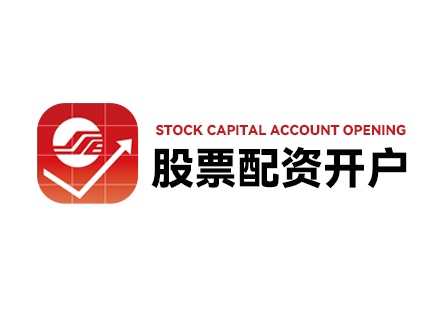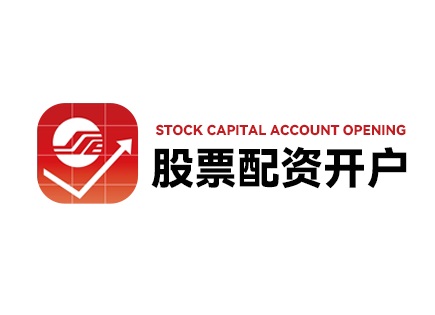 炒股配资_配资开户_股票配资平台/配资门户网
炒股配资_配资开户_股票配资平台/配资门户网
在股市风云中乘风破浪:解密最新股票配资的策略与技巧
Imagine this: a seasoned trader sitting in front of multiple screens, analyzing charts, sipping coffee, while a fresh-faced investor wonders how to navigate the chaotic currents of the stock market. What if I told you that leveraging the right strategies in stock financing could turn uncertainty into opportunity? Let’s embark on this journey to demystify the world of the latest stock financing options.
First, it’s crucial to understand the practical side of stock financing. It can be likened to using a magnifying glass—one that amplifies your potential gains, but also magnifies your risks. If you’re planning to enhance your investment portfolio through stock financing, you’ll need to develop solid operational techniques. Diversifying your investments is a key strategy. Instead of putting all your eggs in one basket, wise investors spread their capital across various sectors. This not only mitigates risk but enhances the potential for returns. According to the China Securities Regulatory Commission (CSRC), only investors with a robust risk management plan should consider leveraging. This sets a framework not just for healthily increasing your capital but for protecting your assets from market volatility.
Now, onto the funds: being aware of how to operate your financing is vital. A good rule of thumb is to use no more than 30% of your total funds for any single stock. However, what does it mean to manage your financing amidst fluctuating market conditions? Stock trends can change rapidly, influenced by global events, economic data, or corporate earnings reports. The key is to stay alert and adaptable. Data from Bloomberg indicates that well-informed traders who react swiftly to market changes can achieve up to a 40% higher return over time than those who do not.
However, it’s also essential to consider the regulatory standards behind stock financing. China’s regulatory environment is stringent, which works in favor of both investors and brokers when it comes to protecting interests. Adhering to these standards—like ensuring transparent communication with your financing partner—will not only keep you in good standing with regulatory bodies but also foster trust, which is pivotal in this high-risk arena.

Lastly, let’s talk dollars and cents—the cost structure of stock financing often includes interest rates and potential margin calls. Healthily evaluating these expenses against expected returns is imperative. The average interest rate for stock financing currently hovers around 7%—knowing this allows you to calculate whether potential returns justify the risks. Finally, continually optimizing your strategy is necessary. Using analytics tools can vastly improve your decision-making process, allowing for timely adjustments in your trading strategy. So, are you ready to ride the stock wave with confidence?
What strategies have you found effective in stock financing? Do you have any stories of successes or failures that you'd like to share? How do you view the current market trends impacting stock financing today?
FAQs:
1. 股票配资适合所有类型的投资者吗?
2. 在选择配资公司时需要考虑哪些因素?

3. 如果达到保证金要求未能及时补充,可能出现什么后果?
- 08-23风口之上的杠杆:理性分析在线配资炒股的收益与风险
- 08-23杠杆与智慧:透视陶配网配资的收益与风险艺术
- 08-21杠杆之舞:配资炒股的实战逻辑与风险解剖
- 08-23股市杠杆的边界:行情调整、业务边界与外部资金的全景观察
- 08-23杠杆背后的真相:在配资炒股中国股票配资网如何看见风险与机会
- 08-23股票配资平台导航:谁值得托付你的资金?收益、风控与透明度全解析
- 08-22配资江湖:杠杆、策略与那根救命绳
- 08-22把风险分层、把收益可视化:一次关于网上配资的深度扫盲
- 08-22顺阳网的投资生态与可行性深度评估
- 08-23把股市当显微镜:散户的实战方法论
- 08-23炒股配资门户网的资金守望:保障、策略与灵活操作
- 08-22光芒杠杆:透视配资实盘平台的交易逻辑与风险防护
- 08-23风暴之岸:在配资平台时代的行情评估、风险治理与增值之道
- 08-22在波动中稳舵:股票配资的全景式风险与运维策略
- 08-23穿透监管迷雾的配资透视:市场、费用与资产配置的全景分析
- 08-22海上风云中的中远海控601919:行情预测、成本透明化与选股框架
- 08-23把放大镜递给你的,是机会还是陷阱?——关于股票理财配资的智慧观照
- 08-22股票配资全景指南:从行情研究到风险控制与收益提升
- 08-21从数据到决策:一款炒股App的评估、披露与执行逻辑
- 08-22中金汇融的多维透视:从行情到执行的实践路径
- 08-22酒香里的资本密码:解读贵州茅台600519的投资逻辑
- 08-23股海叙事:资金流、财务分析与收益最大化的综合分析之旅
- 08-24规范化股票配资公司的全流程评估与实操方案
- 08-23以结构化思维把握哈尔滨电气1133.HK的市场、管理与风险之路
- 08-22配资导航:从趋势到快速交易的六步实战指南
- 08-22线上配资与专业炒股:从市场判断到利润解析
- 08-22盛世杠杆:潮涌中的资本演义
- 08-22把正规炒股平台当城市:用数据和纪律建好你的投资之家
- 08-23放大与自控:股票加大平台的多维运行与风险治理
- 08-24中金汇融:以效率为核的市场操作指南与资金管理策略
- 08-23老白干酒(600559):风险、防范与操盘的审慎问答
- 08-22炒股能涨几倍?从市场脉动到资金部署的全景解读
- 08-22股市配资门户的尽调与风险管控框架
- 08-23股票配资的全方位评估:市场、融资与风险的系统分析
- 08-23米牛配资深度解读:从市场脉络到风险与资金灵活度的实操路线
- 08-21当资金像放大镜:透视“投查查配资平台”的交易与风控秘籍
- 08-22月配杠杆:时间与风险的静默博弈
- 08-23潮起潮落:在线股票配资的全景分析与实战指南
- 08-22资本显微镜:从数据到收益的策略炼金
- 08-23在红绿之间:把股市当成长期训练场的七堂课
- 08-23光与稳:解读上海电力(600021)的价值与路径
- 08-23手机配资入门与财报透视:移动开户、稳健操盘的实战路线
- 08-21有序杠杆:股票配资的系统性分析与实操指引
- 08-23在震荡中把握节奏:永华证券的全景分析与实操路径
- 08-22可查实盘配资公司的可行性与风险管控:从市场观察到资金策略的系统探讨
- 08-22在波动中求稳:线上股票配资软件的全流程与风险防线
- 08-24最稳的收益,来自对风险的尊重——写给使用股票配资网8的理性者
- 08-2310倍杠杆配资全面解析:风险、策略与实战指南
- 08-24当均线撕开迷雾:一场关于收益计划与资金转移的实战反思
- 08-22扬帆配资app新版:杠杆之间的辩证与实践路径